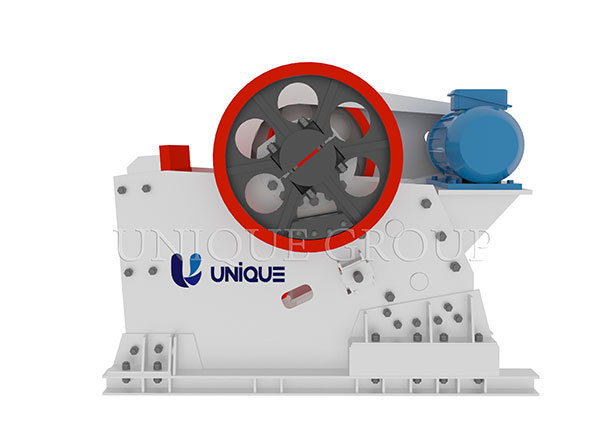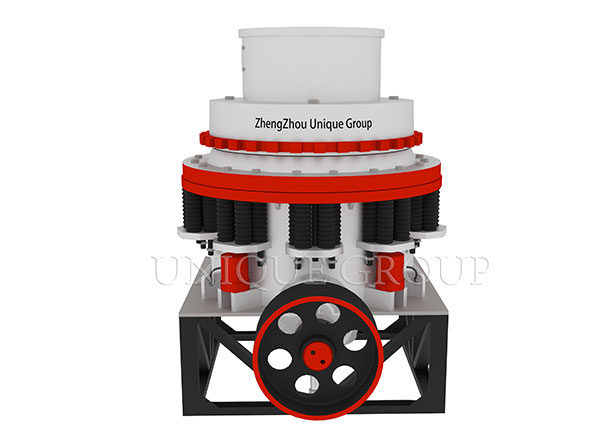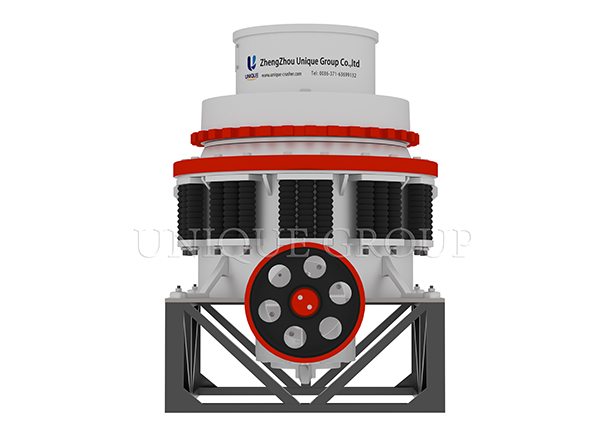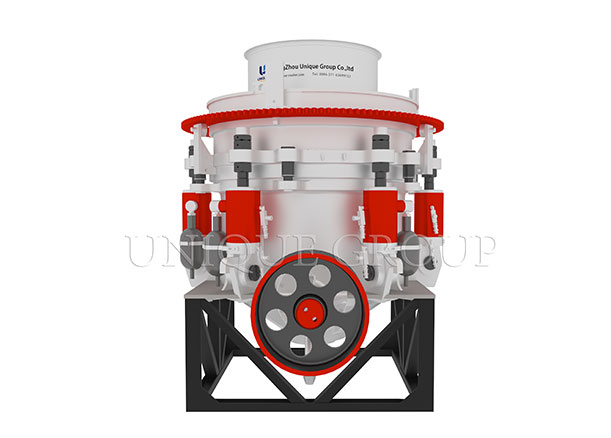Tel: +86-371-63699132
Fax: +86-371-63935058
E-mail:
sales@unique-crusher.com
Zip Code: 450008
The Invisible Battle: Dust Control Challenges in Crusher Operations
Crushers are the relentless workhorses of mining, quarrying, construction, and recycling, reducing massive rocks and debris into usable aggregate. Yet, with every powerful compression, impact, or grinding action, they unleash a silent and pervasive enemy: dust. Controlling this dust is not merely a regulatory checkbox; it's a critical challenge impacting worker health, equipment longevity, environmental compliance, and operational efficiency. This article explores the complex problems inherent in crusher dust control.
1. The Genesis of the Problem: Why Crushers Create So Much Dust The very mechanism of crushing is the root cause. As material is subjected to extreme forces:
Particle Liberation: Impact, compression, and attrition violently break bonds within the feed material, creating vast quantities of new, fine particles.
Air Displacement: The rapid movement of crusher parts (like jaws, cones, hammers, or rotors) compresses and displaces air within the crushing chamber. This air, laden with newly created fines, is forcefully ejected through openings.
Material Handling: Dust generation doesn't stop at the crusher. Transfer points (feeders, conveyors), screening operations, and stockpiling of crushed material create significant secondary dust sources downstream. Each drop, impact, or cascade agitates fines into the air.
2. The Multifaceted Challenges of Crusher Dust Control
Effectively managing crusher dust is fraught with difficulties:
· Dust Capture at the Source:
Containment Difficulties: Crushers, by necessity, have openings for feed entry and product discharge. Effectively sealing these dynamic points (especially on mobile crushers constantly moving between positions) is extremely challenging. Maintaining effective skirt seals on conveyors feeding or receiving from crushers is an ongoing battle against wear and tear.
High Air Volumes & Velocities: The air displaced by the crushing action exits with considerable force and volume. Dust collection systems must be designed to handle this high-volume, high-velocity airflow to capture dust effectively before it disperses. Undersized systems are overwhelmed.
Variability in Feed Material: The dustiness of the feed material can vary drastically – dry material generates vastly more dust than damp material. Material composition (especially silica content) also critically impacts the hazard level and the dust's physical properties (like abrasiveness or hygroscopicity), affecting control strategy effectiveness.
· b) Health Hazards: The Silent Threat:
Respirable Crystalline Silica (RCS): This is the paramount concern. Many rocks (granite, sandstone, quartzite) contain significant silica. RCS particles, small enough to penetrate deep into the lungs (typically < 10 microns, and especially < 4 microns - PM4), cause irreversible diseases like silicosis, lung cancer, and COPD. Crusher operators and nearby workers are at high risk.
Other Toxic Components: Dust may contain heavy metals, asbestos (in demolition recycling), or other harmful substances depending on the feed material, compounding health risks.
Visibility and Safety: Heavy dust clouds obscure vision, increasing the risk of accidents involving mobile equipment or personnel navigating the site.
· c) Environmental & Community Impact:
Air Quality Degradation: Fugitive dust emissions contribute to localized and regional air pollution (PM10, PM2.5), violating environmental regulations and potentially impacting nearby communities, vegetation, and wildlife.
Water Contamination: Dust settling on-site can be washed into stormwater runoff, contaminating surface water bodies with sediments and potentially leached contaminants.
Regulatory Pressure: Environmental agencies impose stringent limits on particulate emissions. Non-compliance results in hefty fines, operational shutdowns, and reputational damage.
· d) Operational & Equipment Issues:
Equipment Wear: Dust is highly abrasive. It accelerates wear on crusher liners, bearings, conveyor belts, rollers, and electrical components (causing short circuits and overheating), leading to frequent breakdowns, costly repairs, and reduced equipment lifespan.
Maintenance Burden: Dust infiltrates everywhere, creating a dirty and hazardous work environment. Cleaning requirements increase significantly, and maintenance tasks become more difficult and time-consuming. Dust collection systems themselves (filters, ductwork, fans) require constant maintenance.
Product Contamination & Loss: Excessive dust can contaminate the final aggregate product, reducing its quality and market value. It also represents a direct loss of saleable material.
Reduced Visibility & Efficiency: Dust clouds hamper operator visibility, making it harder to monitor crusher performance and feed rates, potentially leading to choke-ups or inefficient operation. Communication on-site is also impaired.
· e) Effectiveness & Limitations of Control Technologies: Implementing solutions brings its own set of problems:
Dust Suppression (Water/Mist): While common and relatively low-cost, suppression has limitations. Adding too much water can create material handling problems (clogging, belt slippage, freezing in cold climates), affect product quality, and increase runoff. It's often ineffective for controlling the finest, most hazardous respirable dust (RCS). Water scarcity can also be a constraint.
Local Exhaust Ventilation (LEV) / Dust Collection: Designing, installing, and maintaining effective LEV systems for crushers is complex and expensive. Key issues include:
Hood Design: Capturing dust effectively at high-velocity discharge points requires optimally designed hoods placed as close as possible to the source, which is often mechanically challenging.
Ductwork: Maintaining sufficient air velocity throughout the ducting to prevent dust settling and blockages requires careful engineering. Ductwork is susceptible to abrasion.
Filter Selection & Maintenance: Filters must handle high dust loads and potentially abrasive or hygroscopic particles. Choosing the right filter media (e.g., high-efficiency cartridge filters for RCS) is crucial but costly. Filters blind over time and require regular, often hazardous, replacement or cleaning. Explosion risks may exist with certain dusts.
Fan Power & Energy Costs: Moving the large volumes of air necessary consumes significant energy, contributing to operational costs.
Enclosures: Fully enclosing crushers is highly effective but expensive, complicates access for maintenance and inspection, and can create heat buildup issues requiring ventilation solutions.
3. The Path Forward: Integrated Dust Management
There is no single silver bullet. Overcoming these challenges requires a proactive, integrated approach:
· Source Reduction: Pre-wetting feed material (if feasible without causing downstream issues), minimizing drop heights at transfer points, using rock boxes or impact beds.
· Effective Containment: Prioritizing well-designed and maintained seals, curtains, and partial enclosures around crushers and transfer points.
· Optimized Suppression: Using atomized mist systems or surfactants to target finer particles more effectively with less water. Automated systems linked to crusher operation and feed conditions.
· Properly Designed LEV: Investing in engineered LEV systems tailored to the specific crusher and application, with adequate capture hoods, appropriately sized ducting and fans, and high-efficiency filtration (especially HEPA for RCS). Regular inspection and maintenance are non-negotiable.
· Administrative Controls & PPE: Implementing strict work practices, limiting exposure times, comprehensive worker training, and mandating appropriate, well-fitted respiratory protection (e.g., N95/P2 or better respirators) as a last line of defense, not the primary control.
· Monitoring & Compliance: Regular air monitoring (especially for RCS), visible emission checks (opacity), and environmental monitoring to ensure controls are effective and regulations are met.
The dust generated by crushers represents a complex and persistent challenge with significant consequences for health, environment, equipment, and operations. The problems range from the fundamental physics of dust generation at high-energy crushing points to the practical difficulties of capturing airborne fines, managing health risks like silicosis, preventing environmental damage, and maintaining equipment amidst abrasive conditions. Solutions exist but demand careful selection, integration, and diligent maintenance. Recognizing the multifaceted nature of crusher dust problems is the essential first step towards implementing the robust, layered dust control strategies necessary to protect workers, communities, the environment, and the sustainability of the operation itself. The battle against the invisible plume is continuous, demanding constant vigilance and innovation.






 العربية
العربية Español
Español Português
Português Deutsch
Deutsch









